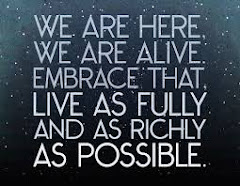Do you identify yourself by skin colour?
Or do you identify yourself by character, interests, faith, friendships, family, skills, professional and personal networking, by politics, landscape, passions, DNA, or any combination of the above?
Norwich is posing that question for most of this month in an extraordinary city-wide exhibition.
The complexity surrounding the construction of personal and social identity will be explored in Photo-ID, a major exhibition in Norwich City Centre, throughout August 2009. It will present the work of nine specially commissioned photographers, who will each visually explore issues around identity. Their work will be shown within a context that explores how recent information about the human genome and its variations affects how we think about identity, now and in the future. Photo-ID will be freely open to the general public, and will be accompanied by a full programme of ancillary educational activities, a book and this website.
What makes us who we are? And how can all the weighty factors forming character and culture be measured in flimsy photographs?These are the big questions posed in a snappy - and at times wacky - exhibition called Photo-ID running through August at the Forum as part of the Contemporary Art Norwich festival.
 My Ancestors, by Carl Jaycock
My Ancestors, by Carl JaycockThis wide-ranging and deeply-probing camera's eye view has been curated for Norfolk Contemporary Arts Society by scientific author and former UEA academic Keith Roberts with record sponsorship of £130,000 from the Wellcome Foundation.
Among specially commissioned work from ten lensmen and women - chosen from 250 contenders from 30 countries - the sole Norfolk talent to be placed under the Forum flashlight is Mark Edwards. He explores how our very special landscape is not only shaped by us: it also shapes us.
Although far from classical ideas of the picturesque, East Anglia has led the English tradition of native landscape art, from Gainsborough, Constable and the Norwich School. This creative heritage is referenced in the Edwards work.
The well-known crowd photographer Simon Terrill caused quite a stir in May when inviting us to appear in his Photo-ID exhibit via a group portrait in Norwich's historic Rosary Cemetery.

Rosary Cemetary by Simon Terrill
His graveyard studies look at how we identify the dead, and also how far we identify with them at a point in history when more people are alive than have ever lived (and when death seems such an outrage to our unphilosophical society that it is often a cue to sue).
Sometimes it's hard to identify with the living, and Paul Sucksmith's pictures from his window in Newcastle city centre of legless (and even brainless) revellers suggest escapes from the mad house. We're all crazy, but some are crazier than others.Swedish photographer Asa Johannesson ponders that strange kinship of twinship in childhood photos of herself and her sister which now appear framed with adult assumption by the grandfather behind the shutter.
Carl Jaycock uses print and digital imaging for a series entitled My Ancestors in which his passport photos are morphed with other faces to form the Union flag or, in this 150th anniversary year of On the Origin of Species, the august head of Charles Darwin.
The evolution of memory into altered reality is neatly and surreally framed by Irish photographer Kim Cunningham. Her return to a Butlin's holiday camp recalled as a highpoint of childhood glamour is rendered all the more haunting since the former leisure centre is now a holding camp for asylum seekers.
Ethical issues raised by DNA databases, biometric data, surveillance camera and ID cards are the concern of Joanna Kane, whose digital imaging creates portraits from numerical and coded data which would have struck a chord with George Orwell.A complex installation by Dave Lewis, composed of back-lit transparencies, ponders the links between science and identity, and especially racial and ethnic awareness.
Central and Eastern Europe in the past century has seen a collision of identities, nowhere more than the Transcarpathia region which shifted from Hungary to Ukraine via decades of Nazi and Soviet oppression. Evi Lemberger shows how the hardy inhabitants overcome drab and deadly history with an explosion of colour and pattern in domestic decoration.
And those who identify art makers and dealers with the making of money these days should hail the subversive work of Marlene Haring who snapped 36,000 images of Norwich on 1,000 rolls of film last month. Before a Charles Saatchi or a Jay Jopling could snap up this installation for a small fortune (and sell it on for a large one), the artist invested in a vending machine. We are now invited to buy her film rolls at £1 a time. Whether each of these exhibits develops into prints is entirely up to us.
Photo-ID is at the Forum from August 1 to August 29 (and partly viewable on here). Admission free.

An untitled work by Paul Sucksmith


No comments:
Post a Comment